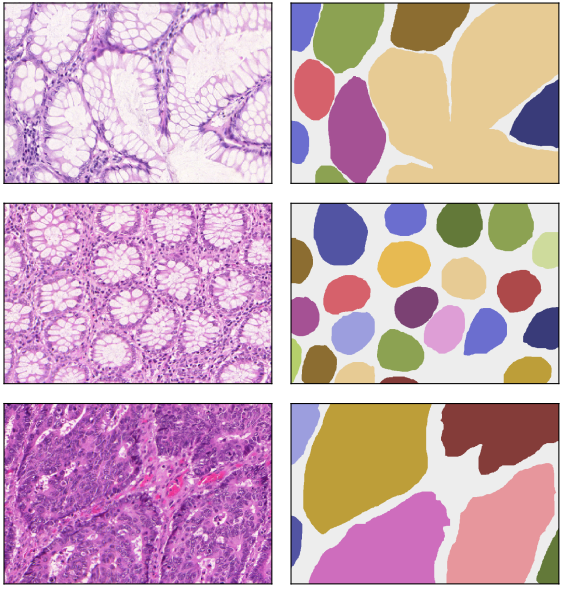Neural ODEs for Segmentation of Colon Glands

About
- Histopatology Colon Image (Histopatology Image of the Colon)
- Colon Glands Segmentation (Segmentation of individual colon glands for an input histopathology colon image, each colon gland is individually labeled)
Model Facts
Summary
Automated medical image segmentation plays a key role in quantitative research and diagnostics. Convolutional neural networks based on the U-Net architecture are the state-of-the-art. A key disadvantage is the hard-coding of the receptive field size, which requires architecture optimization for each segmentation task. Furthermore, increasing the receptive field results in an increasing number of weights. Recently, Neural Ordinary Differential Equations (NODE) have been proposed, a new type of continuous depth deep neural network. This framework allows for a dynamic receptive field at a constant memory cost and a smaller amount of parameters. We show on a colon gland segmentation dataset (GlaS) that these NODEs can be used within the U-Net framework to improve segmentation results while reducing memory load and parameter counts.
For more detailed information see the paper on arxiv.
Mechanism
- Target population: Histopathology images of the colon specifically from the colon gland segmentation dataset (GlaS)
- Algorithm description: A U-Net architecture with Neural Ordinary Differential Equations to enhance the receptive field
Validation and Performance
GlaS challenge metrics for the total test set, partially adopted from Table 1 from the paper
| Method | Object Dice | F1 score | Hausdorff | Notes |
|---|---|---|---|---|
| U-Net | 0.868 | 0.841 | 69.6 | 30m parameters |
| U-ResNet | 0.757 | 0.689 | 122 | 2m parameters |
| U-Node | 0.881 | 0.861 | 59.5 | 2m parameters |
Uses and Directions
This algorithm was developed for research purposes only.
Warnings
The algorithm was trained and validated on the colon gland segmentation dataset (GlaS), the performance of the algorithm may not generalize to other datasets.
Common Error Messages
-
Information on this algorithm has been provided by the Algorithm Editors, following the Model Facts labels guidelines from Sendak, M.P., Gao, M., Brajer, N. et al. Presenting machine learning model information to clinical end users with model facts labels. npj Digit. Med. 3, 41 (2020). 10.1038/s41746-020-0253-3

